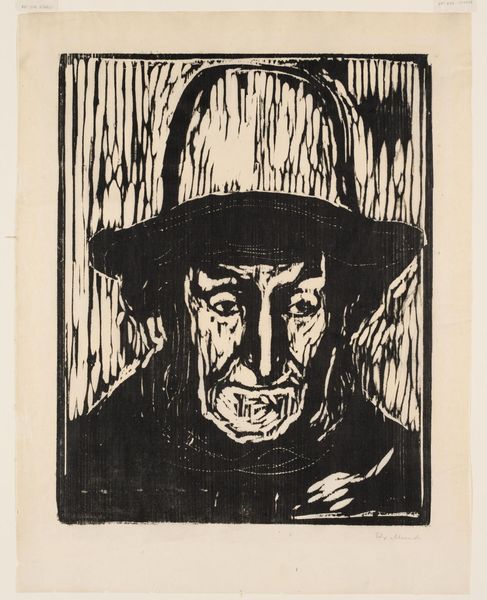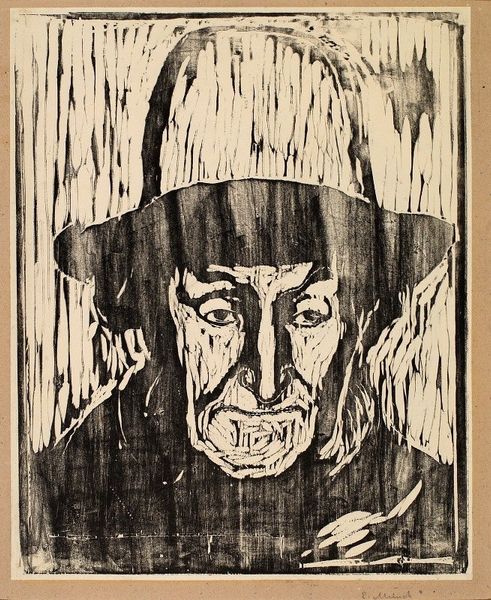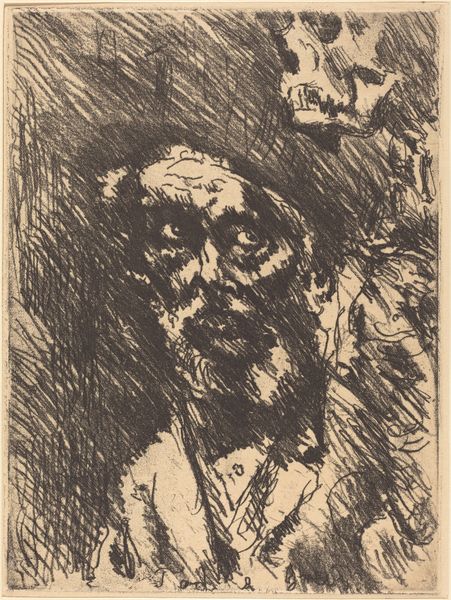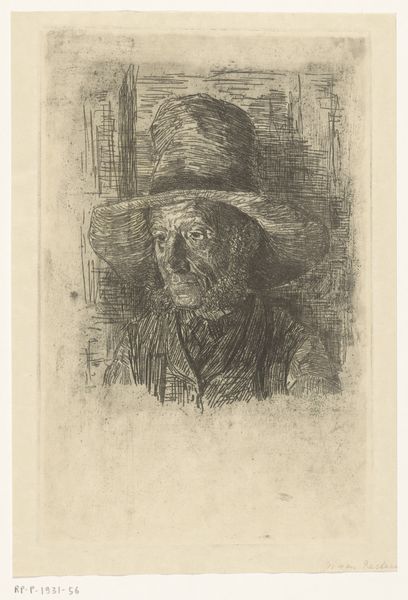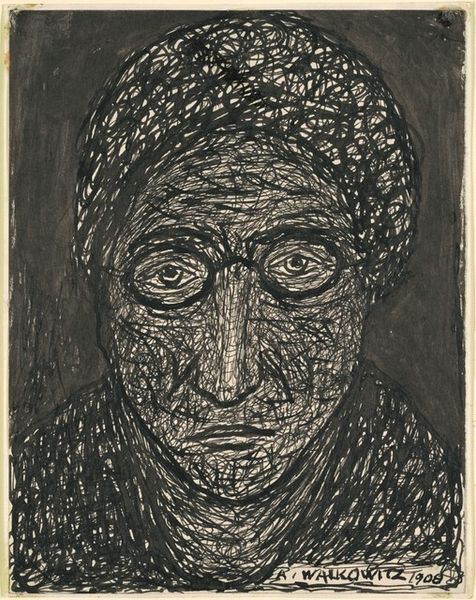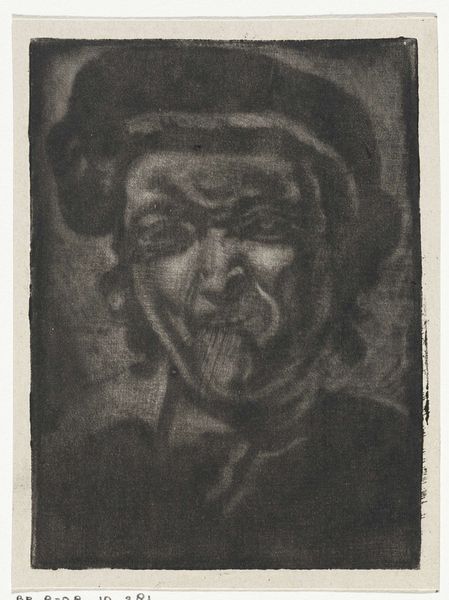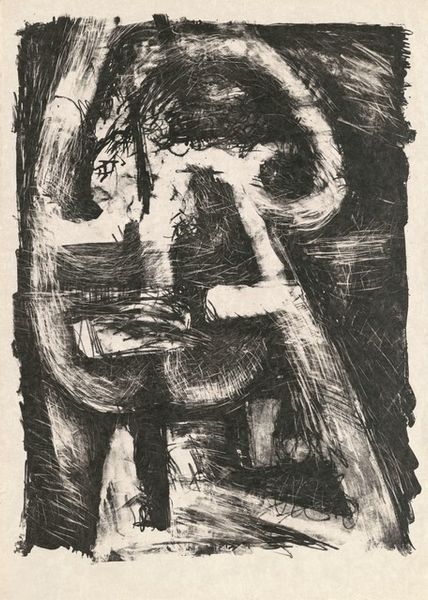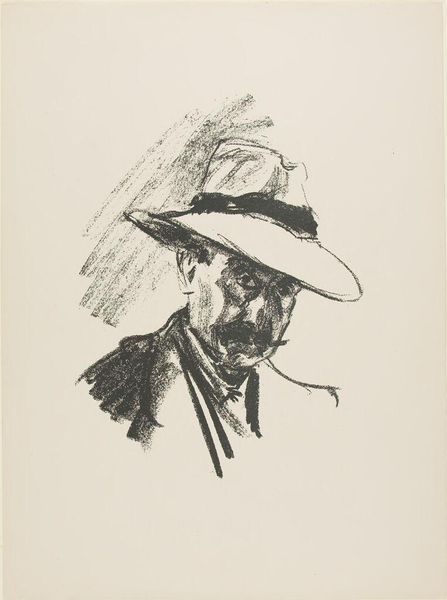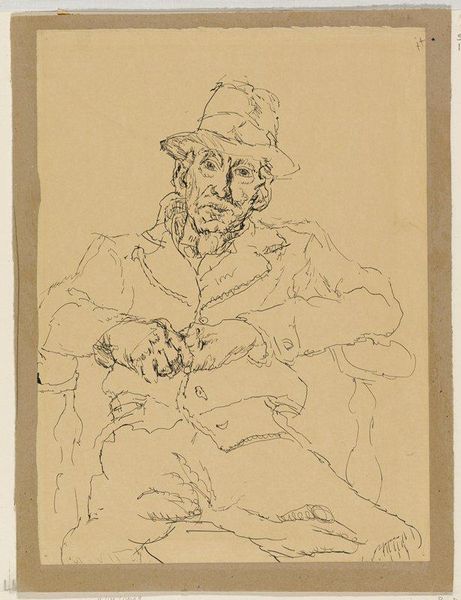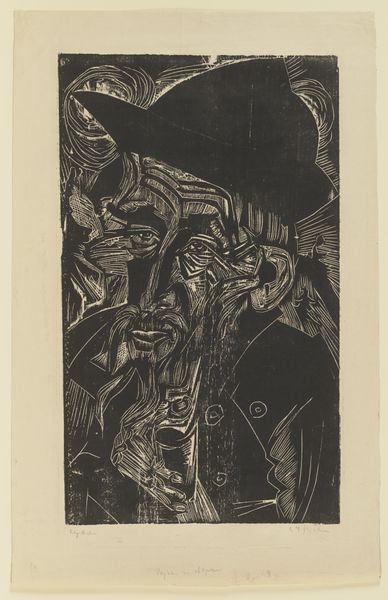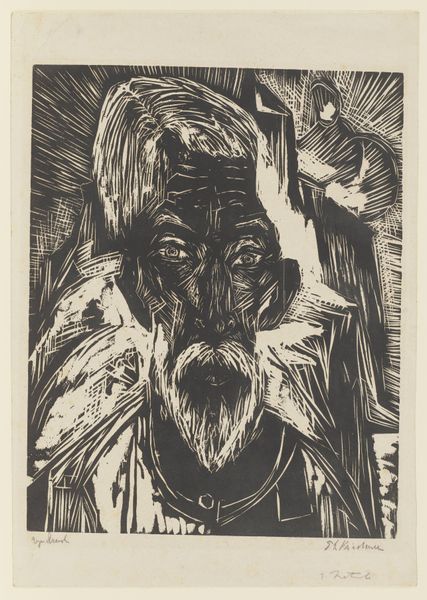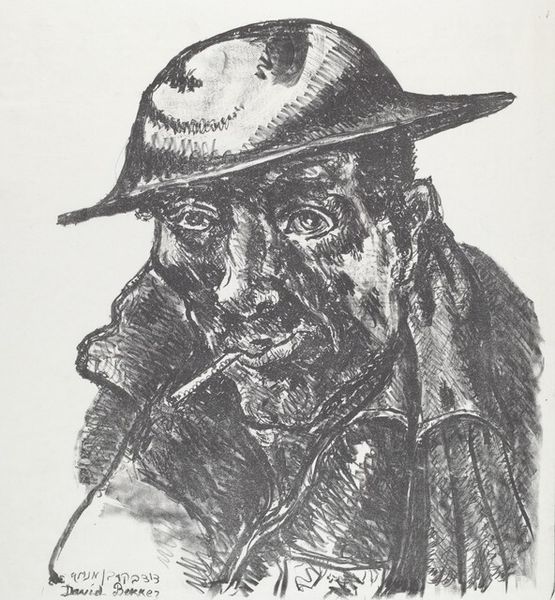
#
toned paper
#
ink drawing
# print
#
pen sketch
#
junji ito style
#
fluid art
#
ink drawing experimentation
#
coffee painting
#
pen-ink sketch
#
portrait drawing
#
tattoo art
Dimensions: block: 44.2 x 35.1 cm (17 3/8 x 13 13/16 in.) sheet: 44.4 x 35.4 cm (17 1/2 x 13 15/16 in.)
Copyright: National Gallery of Art: CC0 1.0
Curator: Munch's 1899 print, "The Old Seaman," rendered with ink on toned paper, strikes me immediately with its stark contrasts. The face emerges from a sort of striated background, looking both weathered and oddly vulnerable. Editor: Vulnerable is precisely the word! It's as if we're seeing not just an old man, but the weight of untold stories etched onto his very being. The hat, casting a heavy shadow, becomes a symbol of experience. Curator: Symbolically, I'd say the hat is complex. While it suggests the seaman's profession, it simultaneously veils him, obscuring part of his face. Think about hats generally; they offer protection, but also disguise and can alter one’s very demeanor and thus change their place within society. Editor: I'm drawn to the almost brutal honesty in the lines themselves. Look at the deep furrows around his eyes and mouth; it speaks volumes about the hardships he's endured and maybe the general toll of life in Norway in the late 19th century, the struggles of those working in the margins of society. Curator: The interesting thing about the materiality here is how prints such as this became powerful in allowing wider audiences to afford works such as this and spread potentially radical political ideas more quickly across society, helping spread and solidify Munch's popularity as well. Editor: And in turn, these prints solidified Munch's vision and politics and amplified a particular Norwegian artistic vision into European cultural consciousness. This image makes me wonder about Munch's political views – his championing of raw emotion could also be interpreted as a kind of social commentary, the cost exacted on the human soul. Curator: Indeed. The power of an image lies not just in what's depicted, but in how it resonates within the viewer's cultural and emotional landscape. An image of the sea, of toil and loss, will invariably evoke certain emotional triggers connected with the unconscious cultural mind that makes such images so impactful. Editor: Agreed, that is what connects us. Looking again, I feel the work's graphic simplicity speaks of his personal angst and an interesting inflection on traditional portraiture with its more intimate and individualized concerns. Curator: It is very evocative! Thank you for sharing these perspectives.
Comments
No comments
Be the first to comment and join the conversation on the ultimate creative platform.
